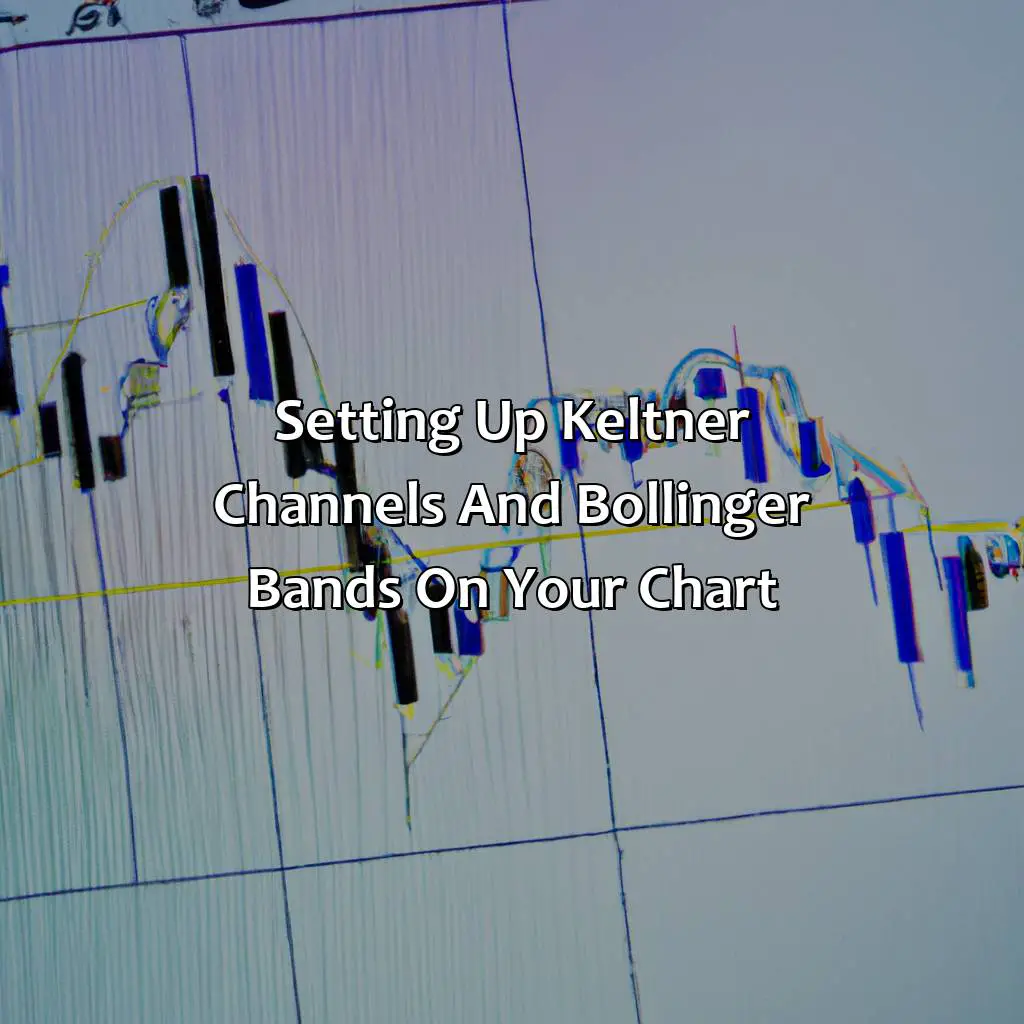
Key Takeaway:
- Keltner Channels and Bollinger Bands are popular technical analysis tools used in trading financial markets. These indicators are based on volatility and price action, and they provide insight into market trends, support and resistance levels, and potential trading opportunities.
- To set up Keltner Channels and Bollinger Bands on your chart, you need to choose the appropriate settings and adjust them to match your trading style and market conditions. You can also use other indicators and chart patterns to confirm or refine your trading signals.
- Keltner Channels and Bollinger Bands can be used together to identify trend direction, potential reversals, and entry/exit points. Traders can use momentum and breakout trading strategies with these indicators, as well as implement stop loss and profit-taking strategies for risk management.
- Common mistakes to avoid when trading with Keltner Channels and Bollinger Bands include relying too much on oversold/overbought signals, ignoring market noise, and failing to adapt to changing market conditions. It’s important to maintain a flexible and disciplined trading approach to maximize your success.
- By implementing Keltner Channels and Bollinger Bands in your trading strategy, you can enhance your ability to identify and capture profitable trading opportunities in the financial markets. These tools can help you improve your trading performance, reduce risk, and increase your overall profitability.
Understanding Keltner Channels and Bollinger Bands

Photo Credits: forexbrokerreport.com by Aaron Harris
Keltner Channels and Bollinger Bands are commonly used technical indicators for trading and trend analysis in financial markets. Keltner Channels are based on price action and volatility, while Bollinger Bands are based on support and resistance levels. By combining the two indicators, traders can gain better insights into price movements and make more informed decisions.
| Indicator | Keltner Channels | Bollinger Bands |
| Description | Measures volatility by drawing channels based on the Average True Range (ATR) of a security. | Measures support and resistance levels by drawing bands based on standard deviations above and below a moving average. |
| Usage | Used to identify breakouts and assess overbought/oversold conditions. | Used to identify trend reversals and confirm price trends. |
In addition to their individual uses, traders can also use Keltner Channels and Bollinger Bands together to analyze price movements more comprehensively. By using both indicators, traders can identify potential breakout opportunities and confirm trend direction. It is interesting to note that Keltner Channels were first introduced by Chester W. Keltner in the 1960s, while Bollinger Bands were developed by John Bollinger in the 1980s. Both indicators have since become popular tools for technical analysis and are widely used by traders in various financial markets.
Setting up Keltner Channels and Bollinger Bands on your chart

Photo Credits: forexbrokerreport.com by Joshua Flores
Setting up Keltner Channels and Bollinger Bands on your chart is a valuable technique used in technical analysis for trading in financial markets. Here’s how to do it.
- Add Keltner Channels to your chart by clicking on
'Insert' > 'Indicators' > 'Volatility' > 'Keltner Channels'. This will open a dialog box where you can adjust parameters such as period and multiplier. - Add Bollinger Bands to your chart by clicking on
'Insert' > 'Indicators' > 'Volatility' > 'Bollinger Bands'. This will open a dialog box where you can adjust parameters such as period and number of deviations. - Once both indicators are added to your chart, you can make adjustments to find the best settings for your trading style. Keep in mind that these indicators measure market volatility and can provide valuable insight into market sentiment and psychology.
- Finally, use these indicators to inform your trading decisions. For example, Keltner Channels can be used to identify breakouts, while Bollinger Bands can be used to identify overbought or oversold conditions.
It’s worth noting that like all technical indicators, Keltner Channels and Bollinger Bands are not foolproof and should be used in conjunction with other analysis and strategies.
How to use Keltner Channels and Bollinger Bands together

Photo Credits: forexbrokerreport.com by Arthur Roberts
Using Keltner Channels and Bollinger Bands together for financial market analysis and trading? You can! Apply trend-following methods, spot potential reversals, and set stops and profit targets. It works for short-term or long-term trading. This helps you to identify trade setups, analyze market cycles, and manage risk.
In this section, you’ll learn how to use Keltner Channels and Bollinger Bands. Identify trend direction, potential reversals, and effective stops and profit targets. All this to optimize your trading strategy.
Identifying trend direction using Keltner Channels and Bollinger Bands
Using Keltner Channels and Bollinger Bands together can assist in identifying trend direction in financial markets through technical analysis. The following table presents the differences between these two indicators for trend following and mean reversion strategies in short term and long term trading.
| Indicator | Trend Following (Short) | Trend Following (Long) | Mean Reversion (Short) | Mean Reversion (Long) |
|---|---|---|---|---|
| Keltner Channels | Narrower bands indicate lower volatility and a potential reversal. Wider bands suggest higher volatility. Buying when price touches or goes below the lower band, selling when it hits or goes above the upper band. | Same as above but with wider channels for a longer time frame. | When prices exceed the outer channel, it signals overbought conditions suggesting a short position is appropriate. When prices go below the lower boundary of the channel, it signals oversold conditions and suggests purchasing long positions. | Similar strategy to short term but with a longer time frame is preferred |
As shown in the table, narrow bands on Keltner Channels signal lower volatility while wider bands signal higher volatility. Exceeding its boundaries indicates buying or selling points for market participants to identify a potential reversal accurately.
It is essential to note that each indicator has its strengths depending on traders’ preferences and their risk tolerance levels. Furthermore, using them separately or combining them should depend on your knowledge about these indicators as well as other factors such as market conditions, liquidity, available capital, and strategy suitability.
According to TradingSim.com, “Bollinger Bands have become almost synonymous with technical analysis,” indicating their widespread use in trading circles globally.
Keltner Channels and Bollinger Bands team up to spot potential trend reversals before they hit you like a ton of bricks.
Identifying potential reversals with Keltner Channels and Bollinger Bands
To anticipate trend reversals in financial markets, technical analysts use Keltner Channels and Bollinger Bands tool. The bands track the price movement of an asset over time by creating upper and lower boundaries around it. Trend changes occur when the price crosses these thresholds.
Here is how we can identify potential trend reversals using Keltner Channels and Bollinger Bands together –
- Look for divergence between the Keltner Channel and the Bollinger Band indicator.
- A cross above or below the channels signifies a potential trend reversal.
It is essential to note trading opportunities observed using chart analysis may be ‘false signals’ that lead to losses instead of profits. Hence additional analysis considering market cycles, price patterns, trading volume is advisable.
Pro Tip: An experienced trader always stays focused on market conditions rather than getting influenced by common trade setups as trade setups alone can create false signals leading to losses instead of gains. Cut your losses with Keltner Channels and Bollinger Bands stop loss strategies, but don’t forget to aim for profit targets using technical analysis and smart risk management.
Setting stops and profit targets using Keltner Channels and Bollinger Bands
To manage risk and maximize profits, traders use technical analysis tools like Keltner Channels and Bollinger Bands to set stop loss and profit target levels in trading the financial markets.
Here is a six-step guide to Setting stops and profit targets using Keltner Channels and Bollinger Bands:
- Identify trend direction using Keltner Channels and Bollinger Bands.
- Set stop loss below the lower band of both Keltner Channels and Bollinger Bands.
- Determine the take-profit level by measuring the distance between the entry price and resistance levels for long positions or support levels for short positions.
- Adjust the take-profit level based on any market-moving news or events that could impact price movement.
- Maintain an appropriate risk-to-reward ratio, such as 1:2 or 1:3, when placing trades.
- Monitor trades regularly, adjust stop-loss orders as needed, and exit with a profit when take-profit orders are triggered.
Use these trading rules as general guidelines when setting stops and profit targets using Keltner Channels and Bollinger Bands. However, each trader should develop their unique rules based on their specific needs for risk management and market timing.
Moreover, always consider other fundamental factors before making trading decisions. Suppose you should only use technical analysis tools like Keltner Channels with critical thinking about market conditions that may affect your trades.
Traders who master this skill can use them as part of an effective strategy to identify high probability setups, ensuring they don’t miss out on potentially profitable opportunities while limiting their risks.
Unleash the power of technical analysis with Keltner Channels and Bollinger Bands in your trading strategies – whether you’re a breakout trader, a swing trader, or a day trader!
Keltner Channels and Bollinger Bands trading strategies

Photo Credits: forexbrokerreport.com by Ethan Hernandez
Keltner Channels and Bollinger Bands are useful for trading breakouts, swings and ranges in the financial markets. You can learn to use these strategies effectively by using technical analysis tools.
Two sub-sections are available to help you:
- Trading breakouts with Keltner Channels and Bollinger Bands
- Trading pullbacks with Keltner Channels and Bollinger Bands
Identifying trading signals, chart patterns and candlestick patterns is possible.
Trading breakouts with Keltner Channels and Bollinger Bands
Breakout Trading Signals using Keltner Channels and Bollinger Bands
The combination of Keltner Channels and Bollinger Bands can be useful in identifying breakout trading signals in the financial markets.
| Indicator | Description |
|---|---|
| Keltner Channels | A technical analysis indicator consisting of a central moving average line, upper and lower bands that adjust based on market volatility. |
| Bollinger Bands | A technical analysis tool consisting of a central moving average line, with upper and lower bands adjusted based on standard deviation levels from the moving average. |
Combining these indicators can help traders identify potential breakout opportunities, as well as confirm trend direction. By watching for price action to break out beyond the upper or lower band of either indicator, traders can enter positions in the direction of the trend.
Additionally, traders may want to watch for both indicators to break out simultaneously before entering trades to increase confidence in the trade signal.
Using this strategy requires discipline in waiting for valid signals and properly managing risk by setting stop loss orders appropriately. Traders should also consider using other technical indicators or fundamental analysis to confirm an entry signal before placing a trade.
Implementing Keltner Channels and Bollinger Bands together can provide valuable insight into market trends and potential breakout opportunities. By following the guidelines outlined above, traders can reduce risk while improving their chances of successful trades.
Swing into action and trade with confidence using Keltner Channels and Bollinger Bands for pullbacks in the financial markets.
Trading pullbacks with Keltner Channels and Bollinger Bands
Using Keltner Channels and Bollinger Bands in technical analysis for swing trading can be effective in predicting pullbacks in the financial markets.
Follow these steps:
- Wait for the price to reach the upper or lower Bollinger Band.
- Check if there is a squeeze on the Keltner Channel where it tightens, indicating low volatility and anticipation of a significant move.
- Once a pullback occurs, check if the price stays above the lower band or below the upper band as this can signal a potential trend reversal.
- The middle line of the Keltner Channel can act as an additional support or resistance level for determining entry and exit points.
- Candlestick patterns that align with these indicators, like hammer or shooting star patterns, can strengthen signals for possible pullback opportunities.
- Lastly, risk management should be considered by setting stop loss orders using these indicators’ levels such as at significant highs or closes below the lower Keltner Channel.
Moreover, incorporating other technical analysis tools such as chart patterns and market trends involving multiple timeframes can provide more insights into potential pullback entry points.
A study conducted by Amarjeet Singh et al. published in Research Journal of Finance and Accounting found that using Bollinger Bands with other technical indicators like moving averages or MACD improved trade performance compared to using only one indicator.
Trading with Keltner Channels and Bollinger Bands requires technical analysis skills, patience, and the ability to filter through market noise to avoid oversold or overbought signals.
Common mistakes to avoid when trading with Keltner Channels and Bollinger Bands

Photo Credits: forexbrokerreport.com by Gary Roberts
When trading with Keltner Channels and Bollinger Bands, there are common mistakes that traders must avoid to maximize their chances of success in the financial markets using technical analysis. Here are 6 common mistakes to avoid:
- Ignoring overall market trends and using only Keltner Channels and Bollinger Bands as indicators
- Not considering other analytical tools for confirmation
- Trading based only on oversold or overbought signals
- Not taking market noise into account while trading
- Using fixed stop-loss and take-profit levels instead of dynamic ones
- Trading without a proper risk management plan in place
It is also important to note that the combination of Keltner Channels and Bollinger Bands is not foolproof, and it is essential to understand the market environment and individual stock or asset before deciding to trade.
When using Keltner Channels and Bollinger Bands, traders should keep in mind the importance of setting proper stop-loss and take-profit levels based on current market conditions. Additionally, traders must be ready to adjust their positions based on changes in technical indicators and market trends. Ultimately, a disciplined and systematic approach to trading, coupled with sensible risk management, increases the chances of success in the financial markets.
Some Facts About How To Use Keltner Channels with Bollinger Bands:
- ✅ Keltner Channels and Bollinger Bands can be used together to identify potential breakouts in the market. (Source: Investopedia)
- ✅ Keltner Channels use a moving average and average true range to plot channel lines above and below the price, while Bollinger Bands use standard deviation to plot bands above and below the price. (Source: TradingView)
- ✅ When Keltner Channels and Bollinger Bands are combined, they can help traders identify overbought and oversold conditions in the market. (Source: Admiral Markets)
- ✅ To use Keltner Channels and Bollinger Bands effectively, it’s important to understand their individual strengths and weaknesses. (Source: FXCM)
- ✅ Keltner Channels and Bollinger Bands are just two of many technical indicators that can be used in combination for more effective trading strategies. (Source: The Balance)
FAQs about How Do I Use Keltner Channels With Bollinger Bands?
How do I use Keltner Channels with Bollinger Bands?
Keltner Channels and Bollinger Bands are popular technical analysis tools used by traders to identify potential price trends and momentum. The two indicators can be used together to create a powerful trading strategy.
What are Keltner Channels and Bollinger Bands?
Keltner Channels are a technical analysis indicator used to identify potential price trends in the market. They are similar to Bollinger Bands but instead of using the standard deviation of prices, Keltner Channels use the Average True Range (ATR) to create a channel around the price.
Bollinger Bands are another technical analysis tool that are used to measure volatility. They are created by placing two standard deviations above and below a moving average.
How do I use Keltner Channels and Bollinger Bands together?
When using Keltner Channels with Bollinger Bands, traders can look for price action that falls outside of both indicator lines. This can signal a potential breakout or trend reversal.
Another strategy is to look for the price to move outside of one indicator line and then retrace back inside the other indicator line. This can indicate a potential price reversal.
What time frame should I use when using Keltner Channels with Bollinger Bands?
The time frame used when trading with Keltner Channels and Bollinger Bands will depend on your trading strategy. Short-term traders may use a shorter time frame (such as 5 or 15 minutes) while longer-term traders may use a daily or weekly chart.
What is a squeeze play when using Keltner Channels with Bollinger Bands?
A squeeze play occurs when the Keltner Channels move inside the Bollinger Bands. This can indicate a potential significant move in the price of an asset. Traders can wait for a breakout from the squeeze to enter a trade.
How can I backtest this trading strategy?
Backtesting involves using historical data to test a trading strategy. Traders can use charting software or online tools to backtest a trading strategy using Keltner Channels and Bollinger Bands.


